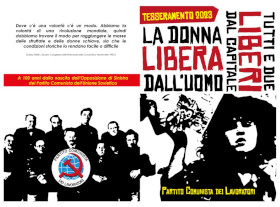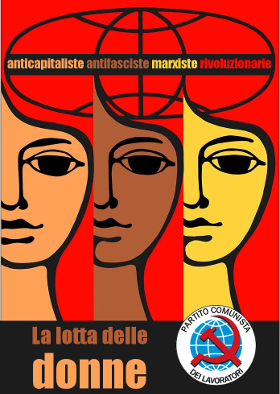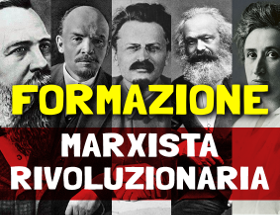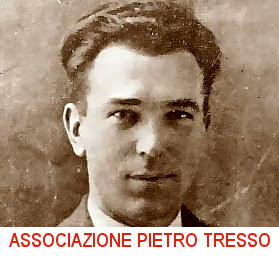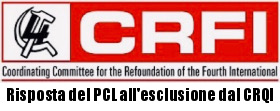Internazionale
On the pro-Palestine movement in Italy
Considerations after the large September and October demonstrations
29 Ottobre 2025
The dynamics of September 22 to October 4 mark a new development in the Italian political scene. An overall leap in mass mobilization that has no parallel in the past two decades. It is too early to measure the political repercussions of this leap, its impact on mass consciousness, and its prospects. There are too many variables at play, objectively unpredictable, both domestic and international, including the outcome of the Trump-Netanyahu plan. However, it is necessary and possible to characterize the new developments that are emerging.
The movement had a directly political trigger: outrage against the genocidal operation of the Zionist state and the complicity of the Italian government. During the two years of genocidal war in Palestine, the majority of Italian society has undoubtedly developed a common pro-Palestinian and anti-Israeli sentiment. But for two years, active mobilization of solidarity and support for Palestine has remained confined to the vanguard, which was certainly important but limited.
In recent weeks, there has been a dramatic leap forward. The mission of the Flotilla, beyond its nature and limitations, has helped to trigger a collective and active identification with the just cause of Palestine. It has given a face and a recognizable banner to the outrage. The huge demonstration in Genoa that accompanied the departure of the mission was the first sign of this leap forward.
The demonstrations on September 22 marked a further progression on a general scale. The demonstrations on October 3, on the occasion of the general strike, marked a new and massive expansion of the mobilization. The national demonstration on October 4 registered in unforeseen terms the process that preceded it and its progressive acceleration. The general dynamic was, therefore, that of a sharp turn. A prolonged accumulation of passive suffering was transformed into active protest.
So far, this turn in the level of mobilization does not seem to have had any impact on the reactionary social bloc, as shown by the election results first in the Marche region and then in Calabria. The bloc of order holds. But in the camp of the alternative social bloc, we are seeing a process of real radicalization.
The presence of young and very young people was a central feature of the mobilization. This was particularly true in the first wave of demonstrations on September 22. In turn, the shockwave of September 22 immediately registered and produced a wider impact.
The leadership of the Confederazione Generale Italiana del Lavoro (CGIL) was the first victim of this acceleration, and above all of its own bureaucratic shortsightedness. Feeling the wave rising after the demonstration in Genoa, and fearing like the plague a possible success of the strike action called by the Unione Sindacale di Base (USB) and other rank-and-file unions for the 22nd, the CGIL apparatus tried preemptively to dampen the flames with its own suddenly called initiative, of a purely symbolic nature.
The sole purpose of the CGIL initiative on September 19 was to deflate the momentum of the September 22 strike, so that it could then resume its bureaucratic calendar for the autumn. But the operation was disastrous for those who promoted it.
Beyond the levels of direct participation in the strike (modest but not insignificant in schools, transport, and services), the demonstrations on September 22 were an extraordinary political success throughout Italy. Not only because of the flood of young students who invaded the streets and squares on a scale not seen for a long time, but also because of the public support for the collective sentiment.
The fact that symbolic occupations of stations, roads, and ports were accompanied by public applause, even from their “victims” (stuck motorists), gave a face to the whole day. The fact that the CGIL apparatus remained silent for an entire day was a measure of its stinging defeat. The USB was gifted by the CGIL with an unexpected and unforeseen result that went well beyond its own perimeter.
The enormous success of September 22 opened up a new dynamic. This was also true in the field of labor relations. The USB found itself with an unforeseen mobilization and, in some ways, a responsibility for mass leadership: a responsibility foreign to its traditional self-centered logic.
On the other hand, the CGIL leadership had to try to recover from the resounding defeat it had suffered by returning to the scene. It even suddenly adopted the slogan of a general strike for Palestine, which it had previously rejected. It went so far as to commit to an unprecedented strike without notice.
The unprecedented convergence of the CGIL and rank-and-file unions in the general strike of October 3 was a byproduct of this mass dynamic. A dynamic that neither the CGIL nor the USB had taken into account.
In turn, the strike and demonstrations of October 3 went beyond September 22. In terms of adhesion to the strike, in terms of mass participation in the marches, in terms of the national expansion of the mobilization across the country (not only in large cities but also in small towns and in the provinces), in terms of public identification and support.
October 3 had an avalanche effect. The demonstration on October 4 in Rome bore witness to this, in its exceptional size and in the composition of its participants. The fact that the CGIL was forced to join a demonstration called by Palestinian resistance organizations on a platform of resistance demands (including “October 7”) gives an indirect measure of the extraordinary nature of the events, the anxiety of the bureaucracy, and the new contradictions that are opening up.
The scale of the mass movement has put the government in difficulty. For the first time in three years. The convergence of mass mobilization and popular opinion has prevented the government from fully implementing the reactionary measures contained in Bill 1660. In many situations, the mass pressure of the streets has forced the police to remain largely passive in the face of the wave of occupations of stations, roads, and highways.
The government's behavior towards the general strike on October 3 was significant. The guarantee commission declared it illegal. But the government did not have the strength to resort to proscription. The squalid threats made by the Ministry of Transport against individual strikers tried to avenge the government's impotence. But it failed to mask it. And it had practically no effect.
More generally, the government's entire handling of the Flotilla affair appeared to the general public as a painful grasping at straws. The government's complicity with Israel emerged as even more evident. And it strengthened the anti-government political impulse in the pro-Palestine mobilization itself, well beyond the humanitarian aspect.
And now? Contrary to the common idea that the movement can do anything, that all you have to do is follow the wave, it is precisely the leap of the mass movement that raises the question of leadership and perspective more than ever. The slogan “let's block everything,” borrowed from France, has rightly captured the radical impulse of a large part of the movement, but it is not in itself capable of charting a way forward and a perspective.
Of course, the mobilization must continue. But with what demands, what forms of organization, what combination of social forces? None of the political and trade-union actors involved in the affair are asking themselves these questions. They have other concerns and interests.
The center-left, fresh from its parliamentary abstention on the Trump-Netanyahu plan, thinks of reaping electoral benefits in the future from what has happened, although, as the facts show, without results.
The CGIL bureaucracy is trying to regain control of the situation that has slipped out of its hands, and to get back on track with its own agenda. USB will work to polish the glory of its unexpected success in order to put itself back at the center.
Potere al Popolo and its youth organizations, which are objectively hegemonic in the student movement, are focused exclusively on establishing their own brand.
Instead, it is necessary to draw a clear line of perspectives for the future of the movement.
The first problem for the continuity of the movement is to answer the question: for what demands are we continuing to fight? The demand for the severing of all relations with Israel must emerge as the central demand. A radical but simple demand, corresponding to popular opinion, susceptible to numerous articulations (in universities as well as in ports), and at the same time unifying in character.
It is a demand internal to the dynamics of the movement, openly anti-government, which transcends the complex variables of the Middle East scene, and lays bare the hypocrisy of the gradualist liberal opposition.
Which social class is capable of translating this demand into concrete action? The working class. This is an important question. It is not simply a matter of asking the Italian government to break with Israel, which is of course the right thing to do, but has no practical effect.
It is a matter of organizing independent action by the workers’ movement that actually pursues this goal. Blocking all traffic with Israel in ports and airports through workers' control of incoming and outgoing goods is central to this. This form of struggle has already emerged sporadically in various Italian ports (Genoa, Livorno, Ravenna, etc.) and European ports (Marseille, Piraeus, Antwerp, etc.).
If there were a European trade-union confederation worthy of the name, it would organize an all-out blockade on a continental scale. In any case, this is a demand to be put forward on a national scale, and one on which to challenge the trade-union leaderships. It is certainly a form of struggle that demonstrates to the younger generation, with the simplest example, the strength of the working class and its centrality.
The entry of the working class into the struggle for Palestine has taken place on a directly political level, but it is not without social implications. This is true. There are workers who have gone on strike for Palestine while not striking for more directly trade-union-related social reasons.
This is no surprise. The entire history of the workers’ movement shows that mass consciousness can develop in many different ways. But it is also true that when a huge mass of youth, of workers, of people pour into the squares and streets, they express reasons and impulses that go deeper than the banner they formally wave and with which they identify.
This is the case with Palestine. Palestine can catalyze a rebellion against injustice in the world. Against the injustice of plummeting wages, of precarious jobs with no future, of daily harassment in social life, of the gap between one's condition and one's aspirations. A gap experienced by young generations all over the world.
In order to give continuity to the movement that has been created, it is therefore essential to work to bring it back to a more comprehensive horizon. This implies a recognized platform of unifying social demands and a perspective of an alternative society.
The battle for a united class and mass front and for its continuity, well beyond the convergence of the general strike on October 3, must be linked to a proposal for a general shift in the workers' and trade-union movement towards class struggle. This is the theme of a unifying general confrontation. It is the struggle for a new leadership for the Italian workers' movement.
Palestine, in its tragic reality, documents the barbarism of colonialism and imperialism in all their forms. But also, for that very reason, the total utopia of reformism. The collapse of the old narrative of “two peoples, two states,” which has been buried by the Trump-Blair-Netanyahu plan, is and must be the starting point for making a vanguard sector of the younger generation, workers and students, understand that there is no real solution to the crisis of humanity outside of a perspective of revolution, in every country and on a global scale.
Bringing this element of consciousness to the working class and youth, bringing it to the consciousness of the Palestinian vanguard in Italy, is at the heart of the intervention of the Communist Workers Party, the Italian section of the International Socialist League.


